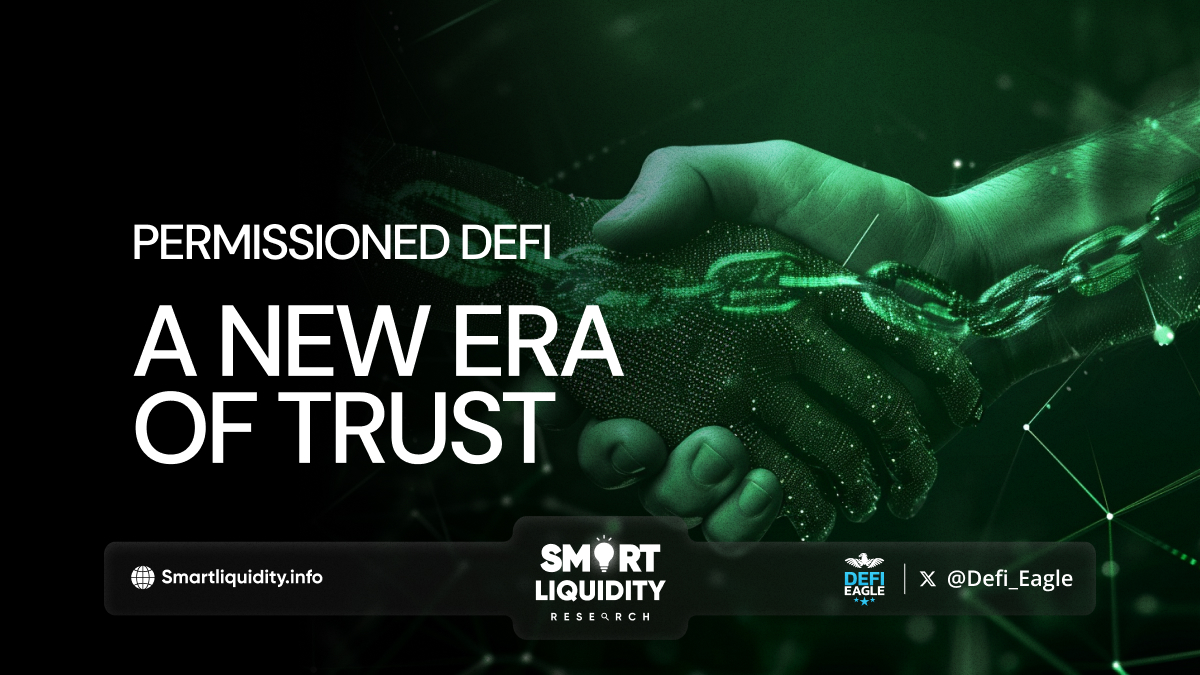Permissioned DeFi: A New Era of Trust


Decentralized Finance (DeFi) has emerged as a revolutionary force in the financial landscape. By leveraging blockchain technology, DeFi offers a glimpse into a future of open, transparent, and peer-to-peer financial services. However, the nascent DeFi ecosystem faces hurdles, particularly regarding regulatory uncertainty and security concerns. Permissioned DeFi (PDeFi) presents a potential solution, aiming to bridge the gap between the innovation of DeFi and the compliance needs of traditional finance.
The Promise of DeFi: Open Finance for All
Traditional finance is often characterized by centralized intermediaries, opaque processes, and limited accessibility. DeFi disrupts this model by creating a permissionless financial system built on blockchains. Users can access financial products like lending, borrowing, and trading without relying on traditional institutions. This fosters greater financial inclusion, efficiency, and transparency.
However, DeFi’s very openness presents challenges. Regulatory frameworks are still catching up to the breakneck pace of innovation in the DeFi space. The lack of clear regulations creates uncertainty for institutions and increases the risk of fraud and illicit activity. Additionally, security breaches and hacks have plagued DeFi protocols, raising concerns about the safety of user funds.
Permissioned DeFi: A Bridge Between Worlds
PDeFi seeks to address these challenges by incorporating elements of traditional finance into the DeFi ecosystem. Here’s how it works:
- Know Your Customer (KYC) and Anti-Money Laundering (AML) Checks: Unlike permissionless DeFi, PDeFi protocols require users to undergo KYC and AML checks. This allows for identification of participants and helps mitigate the risk of money laundering and other illicit activities.
- Consortium Blockchains: Public blockchains underpinning traditional DeFi can be vulnerable to congestion and scalability issues. PDeFi often utilizes consortium blockchains, where a pre-defined set of trusted institutions govern the network. This ensures faster transaction speeds and increased control over participants.
- Regulated Entities as Gatekeepers: In PDeFi models, regulated institutions like banks or investment firms may act as gatekeepers, granting access to the DeFi platform only to verified users. This fosters compliance and provides a layer of security for participants.
The Advantages of Permissioned DeFi
The PDeFi model offers several advantages:
- Institutional Adoption: By addressing regulatory concerns and security risks, PDeFi unlocks the potential for wider institutional adoption of DeFi. This can bring much-needed liquidity and stability to the DeFi ecosystem.
- Enhanced Security: KYC/AML checks and consortium blockchains create a more secure environment for financial transactions, potentially reducing the number of hacks and fraudulent activities that plague DeFi.
- Regulatory Compliance: PDeFi offers a path towards regulatory compliance within the DeFi space. This can pave the way for the development of innovative financial products and services that adhere to existing regulations.
Use Cases for Permissioned DeFi
PDeFi has the potential to revolutionize several areas of finance:
- Cross-Border Payments: Traditional cross-border payments are often slow and expensive. PDeFi can facilitate faster, cheaper, and more transparent cross-border transactions through its efficient blockchain infrastructure.
- Trade Finance: PDeFi can streamline trade finance processes by enabling secure and transparent trade documentation and financing solutions.
- Fractional Ownership: PDeFi can enable fractional ownership of real-world assets like real estate or art, making these investments more accessible to a wider range of investors.
Challenges and Considerations for PDeFi
While promising, PDeFi faces its own set of challenges:
- Centralization Concerns: The involvement of regulated entities in PDeFi could lead to a more centralized system, potentially undermining one of DeFi’s core principles – permissionless access.
- Innovation vs. Regulation: Balancing innovation with regulatory compliance can be a delicate act. Overly stringent regulations could stifle innovation, while lax regulations could expose users to financial risks.
- Technological Hurdles: Developing robust and scalable consortium blockchain solutions that cater to the needs of PDeFi applications is an ongoing challenge.
The Future of Permissioned DeFi
PDeFi represents a significant development in the evolution of DeFi. By bridging the gap between innovation and regulation, PDeFi has the potential to unlock the full potential of DeFi, bringing its benefits to a wider audience and fostering a more inclusive and efficient financial system. As the technology matures and regulatory frameworks evolve, PDeFi is poised to play a major role in shaping the future of finance.




